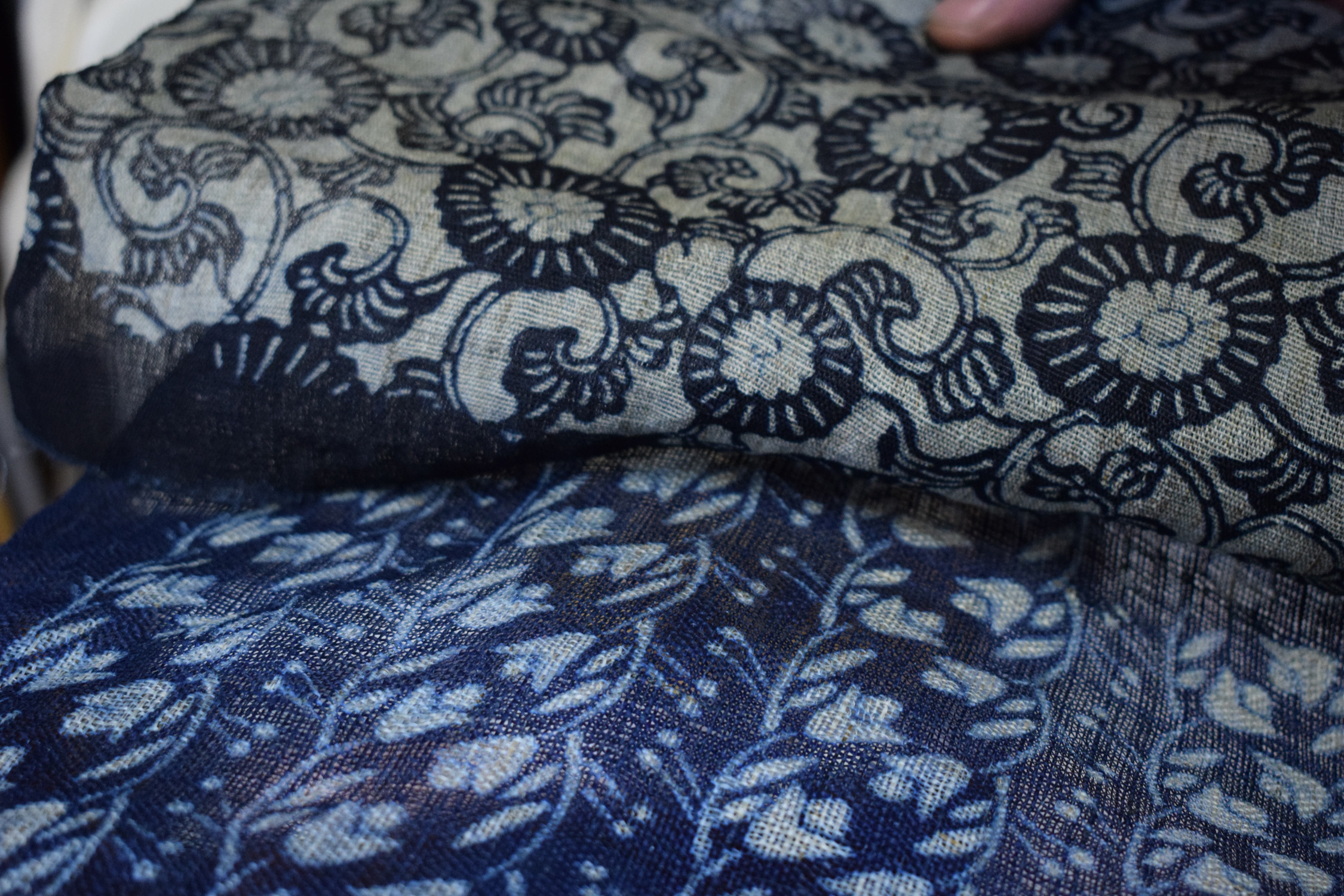Discover Katagami stencilling
What is Katagami?
Katagami stencilling has been practised in Japan for hundreds of years, having being established during the Muromachi period (1337-1573). The first recorded record is a picture by Kanoh Yoshinobu (1522-1640) which showed stencil craftsmen at work. The craft reached its peak during the Edo period under the patronage of the Kishu and was strictly controlled with Ise being the main centre for the craft (in Shiroko, Susuka City in Mie Prefecture).
The craft involves precise cutting of three sheets of washi paper glued together with “Kakishibu”, the aged juice of the Persimmon fruit. This fermented juice has been aged for more than five years to extract maximum tannins which give the juice / dye waterproofing and strengthening qualities as well as a beautiful colour which continues to deepen and develop over several years.
This treated paper is then smoked and dried over a period of some months to produce a nearly waterproof paper ideal for cutting. This paper is known as Kakishibugami and is primarily produced in Shiroko by specialist paper manufacturers.
In recent years, Katagami has grown in popularity for use in decorative art, and it has also been applied to interior design.
Types of stencil cutting
The four stencil cutting techniques listed below were designated an important intangible cultural property by the Japanese government in 1955, and six practitioners of the art were designated as ‘national living treasures’ (the highest accolade that can be given to a craftsperson in Japan). Since then several dozen craftspeople have been accredited.
Tsukibori – “push cutting” – this uses a sharp knife held vertically and with the blade held away from the cutter. The blade uses a sawing motion (up and down) over a small hole in the cutting board allowing the knife tip to move freely. Often used for delicate patterns and to cut up to 7 stencils at a time. (This means that there are spares of the stencil when one starts to wear out). These stencils are typically reinforced with a silk mesh and lacquer to prolong their life (and because there are often large areas cut out between the pattern). The bottommost stencil is thrown away as it is not a clean copy.
Shimabori – “stripe cutting” Also known as “Hikibori” – this is making patterns connected by long straight strips. It is done by drawing the blade along a straight edged ruler. It may appear simple but absolute precision is required to ensure the strips are all perfectly straight and the same width. The best work may have as many as 11 hairline strips (22 cuts) within the space of one centimetre of the pattern! Traditionally a fine mesh would be inserted between the sheets of Jigami paper (cut after the stencil has been made). This is known as “ito ire” or thread insertion and is only carried out by women. There are very few people alive today in Japan that can still do this incredibly precise work.
Dogoubori – “tool cutting” – This technique utilises special carving tools handmade by the Dogoubori stencil practitioner using pieces of steel which have to be worked into two halves of the tool and the tips precisely sharpened to create the correct cutting edge. Only when the correct tools have been made can the stencil be cut. The two sides of the tool are held by thread tightly bound to a wooden handle. These tools are effectively punches and come in a large variety of shapes including diamonds, ovals, crescents, hearts, squares and rice.
Patterns produced by this technique tend to be geometric.
Kiribori – “dot cutting” – This technique uses blades cut into a half cylinder, which is rotated in tight arcs to create patterned stencils consisting of various sized holes. It was the technique most favoured by samurai warriors for komon (sectored patterns). Extremely small patterns can be created using this technique; in one square centimetre there can be as many as 100 small holes.
What is Katazome?
Katazome is the art of using Katagami stencils with a special rice paste as a resist. Stencils are pattern matched down a whole bolt of fabric known as a “tan”. The best stencilled fabric is pasted on both sides with the pattern matched back to front, a highly skilled and painstaking activity…
Katazome methods were originally used with coloured dyes an paste to build up layers of colour on fabric but today the process is more commonly used with indigo dye.
Some stencil are multi-part, allowing for fine variations in shade and even the use of other colours with Sumi ink for greys and Madder for reds being the most popular choices.
Whilst comlplimentary to Katagami, the Katazome artist is no less skilled in their craft.
After cutting a synthetic mesh is attached to the back of the stencil with lacquer. This strengthens the stencil and extends its working life as well as helping prevent the paste from getting underneath larger, cut out areas.


